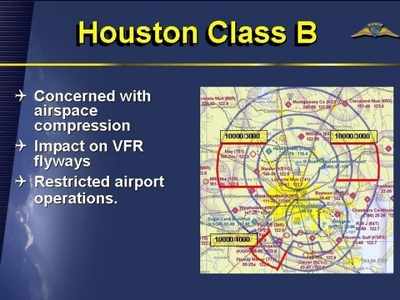Excursions May Result In Aircraft Proximity Issues
The FAA has released a Safety Alert for Operators (SAFO) to alert all pilots and flightcrew operating near the boundaries of Class B airspace to the risk of excursions out of and incursions into Class B airspace. This SAFO also serves to emphasize the importance of a pilot’s and flightcrew’s role in maintaining proper aircraft separation.

As presently designed, some instrument approaches may temporarily take an airplane operating in Class B airspace outside the boundaries of Class B airspace. In addition, pilots and flightcrew performing a visual approach to an airport within Class B airspace have inadvertently exited Class B airspace by descending early or at a rate steeper than the published instrument glide path, or by extending their flight path beyond the Class B airspace lateral boundary. Class B airspace is depicted on charts available to pilots and flightcrew.
Class B airspace is the controlled airspace surrounding the nation’s busiest airports. Title 14 of the Code of Federal Regulations (14CFR) Part 91 §91.131(a)(2) states: “Unless otherwise authorized by ATC each person operating a large turbine engine-powered airplane to or from a primary airport for which a Class B airspace area is designated must operate at or above the designated floors of the Class B airspace area while within the lateral limits of that area.”
An excursion from Class B airspace may result in that airplane coming into close proximity to other aircraft operating outside of, but near the boundary of Class B airspace. Aircraft operating outside of Class B airspace may not be under the control of an Air Traffic Control (ATC) facility providing Class B airspace services which therefore may increase the risk of a Near Mid Air Collision (NMAC).
The approach path of many instrument arrival and approach procedures may come close to the floor of Class B airspace. In some, but not all cases, these points are discernable by a published altitude minimum. The situations that are most likely to cause excursions below the floor of Class B airspace are a visual approach and an intermediate descent during approach. If in either situation the aircraft descends below the published instrument approach flight path, there is the possibility of descending below the floor of the Class B airspace. Additionally, during times of high traffic volume, airplanes above the floor of Class B airspace may receive instructions from ATC that when executed, would cause the airplane to exit the confines of the Class B airspace. Pilots and flightcrew may be unaware of an excursion because they may not be advised of such an event during times of high controller workload.
Due to an increasing use of inflight navigation aids, such as GPS moving maps, general aviation aircraft not in contact with ATC, may be operating close to Class B airspace, thereby introducing a higher risk for any excursion from Class B airspace. The risk of an NMAC is further increased because an aircraft operating outside of but near a Class B airspace boundary is vulnerable to an incursion into the higher density Class B airspace. Therefore it is imperative that all pilots and flightcrew utilize published resources to become familiar with the vertical and lateral boundaries of Class B airspace they may be operating in or near.
During preparations for operations in or near Class B airspace, pilots and flightcrews are encouraged to thoroughly review and brief the boundaries of that airspace. During approach, pilots and flightcrews operating within Class B airspace should be attentive to proper descent profiles and their current position relative to airspace boundaries. When receiving radar vectors, pilots and flightcrew should remain attentive to the lateral limits of the Class B airspace. Pilots of aircraft not under ATC guidance or flight following that are flying above, around or under any portion of Class B airspace, should be aware of the risk of an NMAC with other aircraft operating within or near the Class B airspace. All pilots should maintain external vigilance and apply “See and Avoid” principles during any terminal operation, particularly in or near Class B airspace boundaries where the risk posed by an excursion or incursion is greatest.
Because of the need for heightened awareness, pilots and flightcrew should control the potential for distractions when operating near a Class B airspace boundary, or coordinate the timing and manner in which they program avionics or flight management systems.
Pilots should review the following materials:
- Aeronautical Information Manual (AIM) 3-2-3 Class B Airspace;
- 14 CFR §91.113 Right-of-way rules: Except water operations;
- 14CFR §91.131 Operations in Class B Airspace;
- FAAST Team How to Avoid a Mid Air Collision; and,
- FAA VFR Class B Enhancement Graphics.
(Source: FAA)
 ANN's Daily Aero-Term (05.10.24): Takeoff Roll
ANN's Daily Aero-Term (05.10.24): Takeoff Roll Aero-News: Quote of the Day (05.10.24)
Aero-News: Quote of the Day (05.10.24) Airborne 05.06.24: Gone West-Dick Rutan, ICON BK Update, SpaceX EVA Suit
Airborne 05.06.24: Gone West-Dick Rutan, ICON BK Update, SpaceX EVA Suit Airborne 05.03.24: Advanced Powerplant Solutions, PRA Runway Woes, Drone Racing
Airborne 05.03.24: Advanced Powerplant Solutions, PRA Runway Woes, Drone Racing Aero-News: Quote of the Day (05.11.24)
Aero-News: Quote of the Day (05.11.24)



